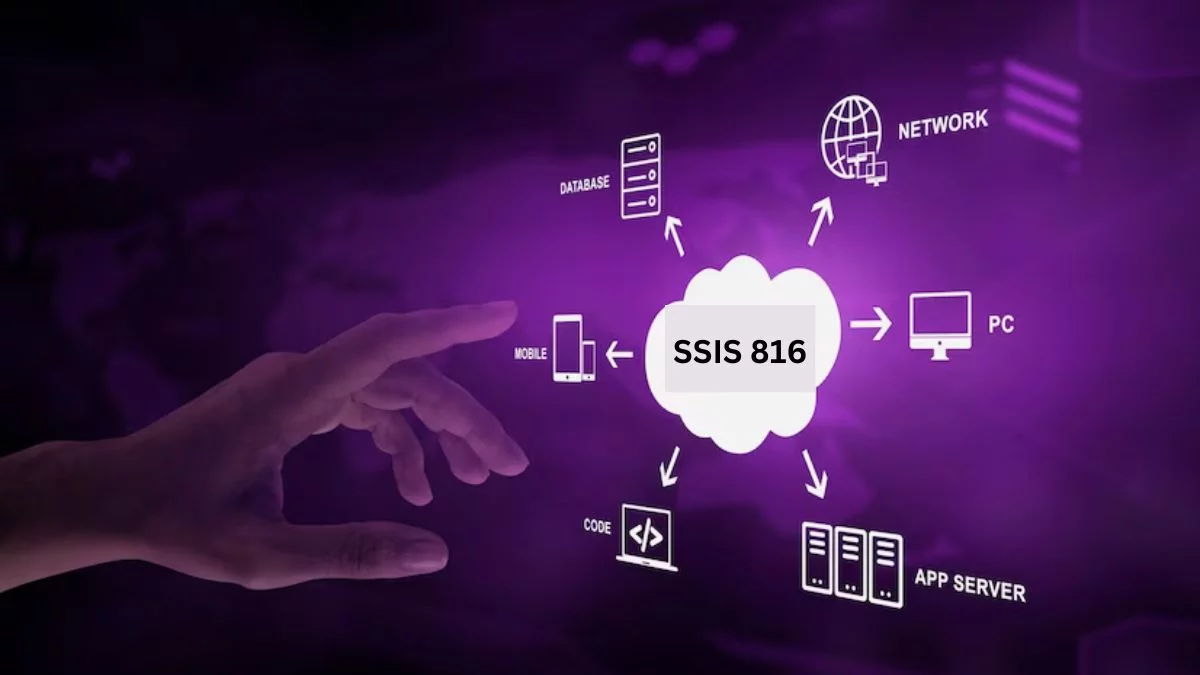
SSIS 816: A Comprehensive Guide to Microsoft's Integration Services
Microsoft’s SQL Server Joining Administrations (SSIS) is an incredible asset for information coordination and change. It permits clients to separate, change, and burden (ETL) information from different sources into an objective data set. One of the most recent variants of SSIS, SSIS 816, offers considerably more highlights and upgrades to assist clients with smoothing out their information combination processes. In this article, we will plunge into the subtleties of SSIS 816 and investigate its capacities, advantages, and how it tends to be utilized really.
1. What is SSIS 816?
SSIS 816 is the most recent adaptation of Microsoft’s Mix Administrations, delivered in 2016. It is a part of the SQL Server data set programming that empowers clients to perform ETL procedure on information. With SSIS 816, clients can make bundles that extricate information from different sources, change it as per their requirements, and burden it into an objective data set. These bundles can be planned to run at explicit times or set off by occasions, making it a productive device for robotizing information coordination processes.
1.1 Key Features of SSIS 816
- Further developed execution: SSIS has been enhanced for quicker execution, making it ideal for dealing with huge datasets.
- Upgraded investigating: The new troubleshooting highlights in SSIS 816 permit clients to proficiently recognize and investigate blunders more.
- High level information purging: With the expansion of new information purifying parts, SSIS makes it more straightforward to clean and normalize information prior to stacking it into the objective data set.
- Better network: SSIS backings a large number of information sources, including cloud-based stages, for example, Sky blue and Amazon Web Administrations (AWS).
- Further developed sending choices: Clients can now convey SSIS bundles to the cloud, making it more straightforward to oversee and scale their information coordination processes.
2. How to Use SSIS 816?
Utilizing SSIS 816 is generally straightforward, in any event, for the people who are new to information mix. The accompanying advances frame the most common way of making a fundamental SSIS bundle:
2.1 Creating a New Project
To make another SSIS project, open SQL Server Information Apparatuses (SSDT) and select “Joining Administrations Venture” from the rundown of layouts. Give your undertaking a name and snap “Alright.”
2.2 Adding Data Sources
The following stage is to add the information sources from which you need to separate information. Right-click on the “Association Directors” tab and select “New Association.” Pick the proper information source type and give the fundamental association data.
2.3 Creating Data Flow Tasks
Information stream assignments are the core of a SSIS bundle. They permit clients to control information as it moves from the source to the objective. To make an information stream task, right-click on the “Control Stream” tab and select “Information Stream Undertaking.” Double tap on the errand to open the information stream proofreader.
2.4 Transforming Data
Inside the information stream supervisor, clients can add different changes to control the information. These incorporate arranging, sifting, blending, and conglomerating information. Clients can likewise add custom contents utilizing dialects like C# or VB.NET.
2.5 Loading Data into Destination
When the information has been changed, it tends to be stacked into the objective data set. To do this, add an “OLE DB Objective” part to the information stream and design it to stack information into the ideal table.
3. Benefits of Using SSIS 816
SSIS 816 offers a few advantages that go with it a well known decision for information coordination:
3.1 Cost-Effective Solution
As a component of the SQL Server programming, SSIS is a practical answer for information coordination. It kills the requirement for buying extra ETL devices, making it a spending plan cordial choice for associations.
3.2 User-Friendly Interface
SSIS 816 has an easy to use interface that makes it simple to utilize, in any event, for the people who are curious about coding or information joining. The intuitive usefulness and visual plan apparatuses simplify it to make and oversee bundles.
3.3 Scalability
With the capacity to convey SSIS bundles to the cloud, clients can undoubtedly scale their information joining processes as their requirements develop. This makes SSIS an adaptable answer for organizations, everything being equal.
FAQs
What is the difference between SSIS 816 and previous versions?
SSIS 816 offers further developed execution, upgraded troubleshooting abilities, and better availability choices contrasted with past forms.
Can I schedule SSIS packages to run at specific times?
Indeed, SSIS 816 permits clients to plan bundles to run at explicit times or set off by occasions.
Is SSIS 816 suitable for handling large datasets?
Indeed, SSIS has been enhanced for quicker execution and can deal with enormous datasets effectively.
Can I add custom scripts to my SSIS package?
Indeed, SSIS permits clients to add custom contents utilizing dialects like C# or VB.NET.
Is SSIS 816 only compatible with SQL Server databases?
No, SSIS 816 backings a great many information sources, including cloud-based stages like Sky blue and AWS.
Conclusion
SSIS 816 is an integral asset for information incorporation and change, offering further developed execution, improved investigating, and high level information purifying capacities. With its easy to use point of interaction and versatility, it is a savvy answer for organizations, everything being equal. By understanding its highlights and advantages, clients can successfully use SSIS to smooth out their information coordination processes and work on by and large productivity.










